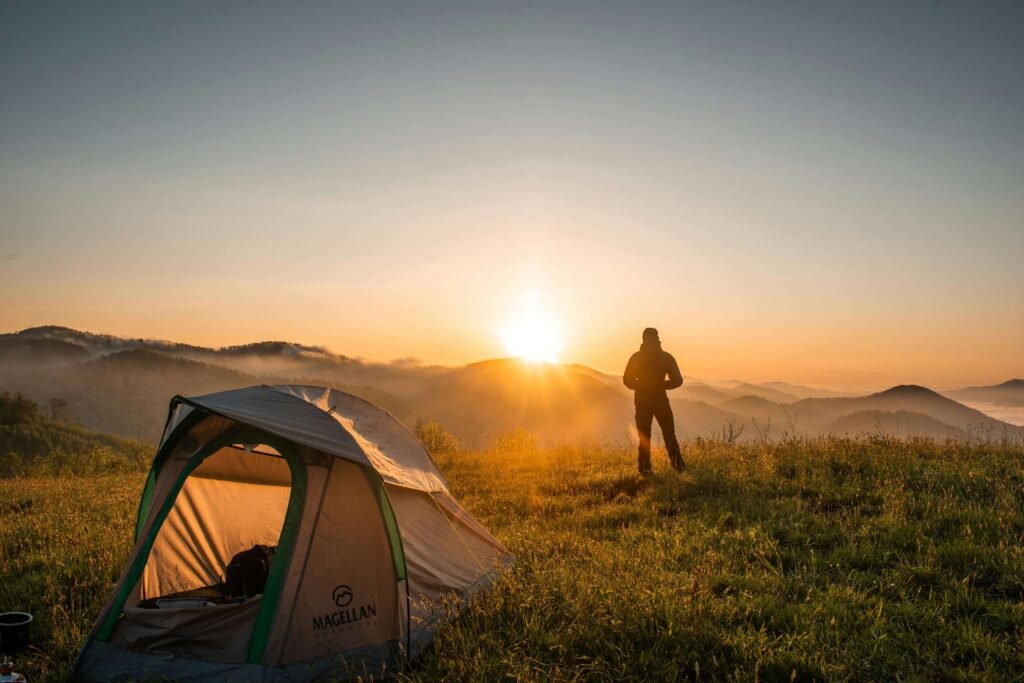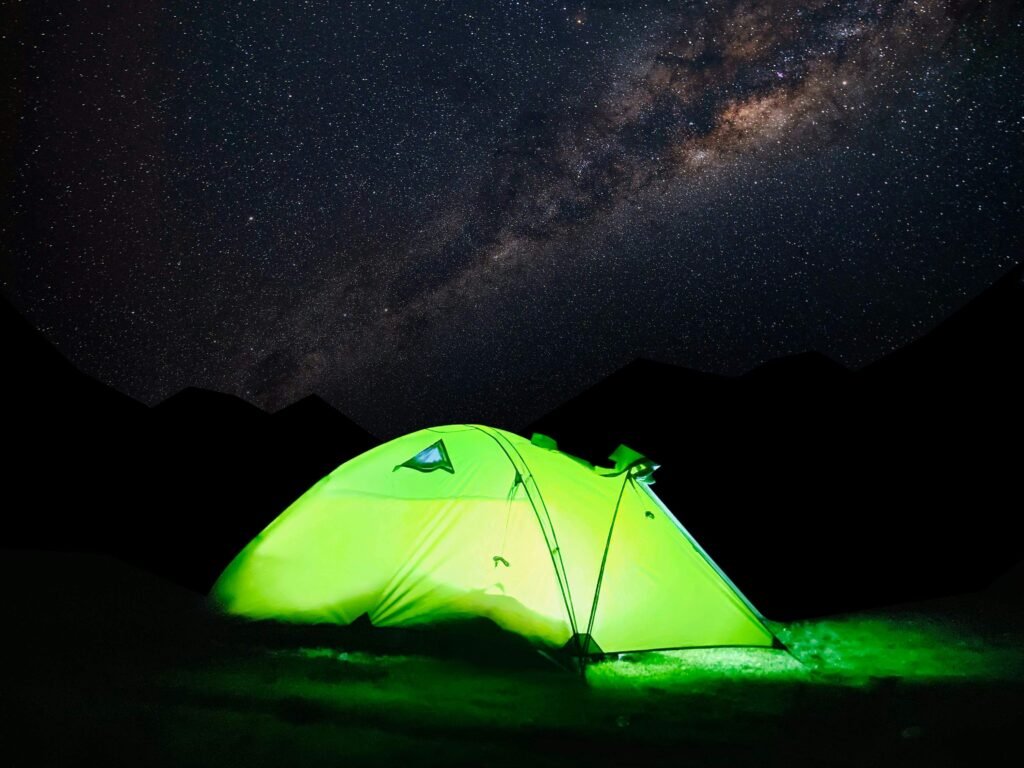
Introduce solo camping as an enriching experience to connect with nature and oneself, highlighting Germany’s diverse landscapes and rich cultural history.
Tips for Solo Campers
When embarking on solo camping adventures in Germany, it’s essential to prioritize safety and preparedness. Always inform someone of your itinerary and expected return date, and carry a reliable GPS device or offline maps. Invest in a durable and lightweight tent like the “Trailblazer Solo Tent” for easy setup and weather resistance. For cooking, consider portable options such as the “Everest Camping Stove” for efficiency in varying conditions. Stay hydrated with a robust water filtration system like the “AquaPure Filter Bottle,” especially when exploring remote areas. Pack versatile clothing layers and gear such as the “Nomad Hiking Backpack” for comfort during long hikes. Finally, respect wildlife and adhere to leave-no-trace principles by properly disposing of waste with biodegradable “EcoWaste Bags.” With these precautions and gear, solo camping in Germany can be a fulfilling and safe experience amidst its breathtaking landscapes.
Some Solo Camping Destinations
1. Bavarian Forest National Park
Location: Southeastern Germany, along the Czech border.
Description: Dense forests, clear lakes, diverse wildlife; established in 1970.
Camping Options: Specific campgrounds or areas for solo campers.
Activities: Hiking trails, wildlife spotting, mushroom hunting.
Hospitality: Nearby guesthouses, cabins; recommend accommodations.
Best Time: Summer for hiking, winter for snow activities.
2. Saxon Switzerland National Park
Location: Near Dresden, Saxony; established in 1990.
Description: Sandstone formations, picturesque landscapes.
Camping Options: Campsites, safety tips for solo campers.
Activities: Rock climbing, hiking (e.g., Malerweg), panoramic viewpoints.
Hospitality: Nearby hotels, B&Bs; accommodation options.
Best Time: Spring and fall for mild weather.
3. Harz National Park
Location: Central Germany (Lower Saxony, Saxony-Anhalt, Thuringia); established in 1990.
Description: Dense forests, historic towns, mountainous landscapes.
Camping Options: Recommended campsites, safety precautions.
Activities: Hiking the Brocken, exploring medieval towns.
Hospitality: Local inns, mountain huts; lodging recommendations.
Best Time: Summer for hiking, winter for snow activities.
4. Black Forest (Schwarzwald)
Location: Southwest Germany (Baden-Württemberg, Bavaria); historical records date back to 1162.
Description: Germany’s largest forested mountain range, charming villages.
Camping Options: Campsites, secluded spots; solo camping tips.
Activities: Hiking (e.g., Westweg trail), Triberg Waterfalls, spa towns.
Hospitality: Spa resorts, guesthouses; lodging options.
Best Time: Spring and fall for hiking, winter for skiing.
5. Eifel National Park
Location: Western Germany, near Belgian border; established in 2004.
Description: Volcanic landscapes, dense forests, tranquil lakes.
Camping Options: Campgrounds, wild camping guidelines.
Activities: Hiking (Eifelsteig), wildlife watching, Vogelsang Castle.
Hospitality: Eco-lodges, hostels; sustainable lodging options.
Best Time: Summer for outdoor activities, fall for foliage.

6. Berchtesgaden National Park
Location: Bavaria, near the Austrian border; established in 1978.
Description: Alpine scenery, rugged peaks, clear lakes.
Camping Options: Designated campsites, safety advice.
Activities: Hiking (e.g., Watzmann Mountain), boat tours on Königssee.
Hospitality: Alpine hotels, mountain lodges; recommended accommodations.
Best Time: Summer for hiking, spring for wildflowers.
7. Müritz National Park
Location: Northern Germany, Mecklenburg-Vorpommern; established in 1990.
Description: Largest inland lake in Germany, forests, wetlands.
Camping Options: Lakeside campgrounds, birdwatching spots.
Activities: Canoeing/kayaking on Müritz, cycling, birdwatching.
Hospitality: Lakeside resorts, holiday apartments; accommodation choices.
Best Time: Summer for water activities, spring for birdwatching.
8. Thuringian Forest
Location: Thuringia, central Germany; historical records from the 12th century.
Description: Lush forests, hiking trails, historic sites.
Camping Options: Recommended campsites, solo camping precautions.
Activities: Hiking (e.g., Rennsteig trail), Wartburg Castle.
Hospitality: Thuringian cuisine in local inns, guesthouses.
Best Time: Summer for hiking, winter for skiing.
9. Palatinate Forest
Location: Rhineland-Palatinate, western Germany; historical settlements from ancient times.
Description: Largest contiguous forest in Germany, vineyards.
Camping Options: Campsites, solo camping etiquette.
Activities: Hiking (e.g., Palatine Forest Trail), wine tasting.
Hospitality: Wine estates, guesthouses; local accommodations.
Best Time: Fall for wine festivals, spring for hiking.
10. Rhön Biosphere Reserve
Location: Hesse, Bavaria, and Thuringia borders; UNESCO Biosphere Reserve since 1991.
Description: Rolling hills, open landscapes, dark sky reserve.
Camping Options: Designated campsites, stargazing tips.
Activities: Hiking (e.g., Wasserkuppe), stargazing, visiting Fulda.
Hospitality: Traditional Rhön cuisine in local restaurants, farm stays.
Best Time: Summer for outdoor activities, winter for stargazing.
Tips for Solo Camping in Germany
Safety: Wildlife awareness, emergency preparedness, solo traveler safety tips.
Regulations: Camping rules, permits for national parks.
Packing List: Essential gear (tent, sleeping bag, cooking equipment).
Leave No Trace: Environmental conservation, responsible camping practices.
Conclusion
Encourage solo campers to explore Germany’s diverse landscapes and rich history, providing links for further information and booking accommodations at national parks or campsites.

Its like you read my mind! You appear to know so much about this, like you wrote the book in it or something. I think that you can do with a few pics to drive the message home a little bit, but other than that, this is fantastic blog. A great read. I’ll certainly be back.
Wow, these national parks in Germany sound amazing! Each one offers something unique for solo campers and nature lovers. From the sandstone formations in Saxon Switzerland to the dense forests and historic towns in Harz, there’s plenty to explore. Black Forest’s charming villages and spa towns are a must-see, while the volcanic landscapes of Eifel National Park offer tranquil lakes perfect for a peaceful retreat. The alpine scenery of Berchtesgaden is breathtaking, and Müritz is ideal for water activities. Thuringian Forest and Palatinate Forest are great for hiking and cultural experiences, while Rhön Biosphere Reserve is perfect for stargazing. Can’t wait to plan my trip! 🌲⛺✨